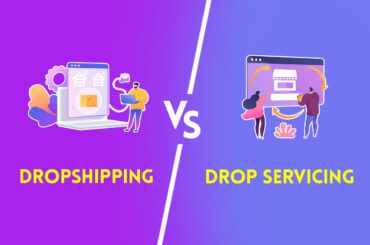
High school’s senior year is jam-packed with activity. People start asking you about your plans for after high school, not too far into the academic year, though. People worry about career for teenager more than theirs. And although you are not required to respond to a question simply because it is asked, let us at least make you as ready as possible. How to choose a career as a teenager? What are the plans for a career following high school? What comes after that? How can we help young people find their ideal job?
Maybe you are a parent reading this to know how to help your teenager find a career path or what job is best for a teenager. This guide will help answer the parent’s questions, “how to help your teenager find a career path” and “how to pick a career path if you are a teenager.”
Here are 15 smart ways how to choose a career as a teenager.
1. Do A Self-Examination

The first step on how to choose a career path is to do a self-examination. It can be useful to use your interests and values as markers of how you would like to spend your free time at work. Finding and pursuing your passion is not the topic because it might be deceptive and unclear. However, it’s normal to desire to be inspired and even enthusiastic about what you do. Self-examination is very important for a teenage career.
Examine the following questions about your traits, values, and interests and consider how you would respond:
Interest-driven questions before asking yourself how to choose a career:
- What topics do you like to learn about?
- What kind of activities do you enjoy doing?
- Do you prefer doing manual or mental labor?
- Do you prefer working indoors or outdoors?
Value-based questions:
- What matters most to you in life?
- What is important to you in life?
- Where do you search for meaning?
- What kind of change are you hoping to see?
Questions based on traits:
- How do you define success?
- What do you wish you had more of?
- Which of your skills do you find most enjoyable?
- Which of your talents do you value the most?
2. Determine Your Interests And Skills
A lot goes into choosing a career. You’ll spend a sizable portion of your life at work, so you should choose your career carefully to enjoy it, stay motivated, and reach your full potential.
Knowing oneself is the first step. This entails evaluating your interests and values as well as your talents and values.
It’s critical to be aware of your variety of abilities and knowledge so you can assess whether they are appropriate for the position you are seeking. Understanding your skill set also helps to identify any gaps that might need to be filled to reach your objectives.
List your general and specialized skills, along with instances where you have used them. A sincere evaluation of your abilities, values, and areas of interest will be helpful when narrowing your selections in the following stage. Moreover, you can assess your proficiency with the essential skills of businesses.
Think about where you are now, where you want to be, and how you’re going to get there when it comes to achieving your job goals. If you’re having trouble deciding on a career, start by posing the following questions to yourself:
- What skills do I have?
- What are my values, interests, and driving forces?
- What did I enjoy best as a student?
- What lifestyle do I desire?
- What do I want out of a job?
- What matters most to me?
Practicing psychometric exams can help you discover your talents, limitations, and character qualities if you’re having trouble figuring them out.
By completing this step, you will have determined the jobs that suit you, but you won’t have enough knowledge to pursue them.
3. Make A List Of Potential Career Paths

At this point, you most likely have several lists of careers in front of you, one produced by each self-evaluation tool you used. You should integrate them into a single master list to stay organized.
Start by looking for careers on several lists, then copy those careers onto a blank page. Put “Occupations to Explore” in the title.
Find any jobs on your lists that you are interested in doing next. They might be professions you know and desire to research more. Include occupations that you are less familiar with as well. You could discover something surprising.
4. Explore Potential Careers
It all comes down to exploring the job market and career pathways that interest you and narrow your possibilities.
Consider the industry where you would like to work. By investigating the local, national, and international job markets, learn about their important trends. This will assist you in learning more about potential career paths and determining which job categories are growing or shrinking.
Three main occupational categories exist. Which are:
- Private – sole traders, partnerships, and limited companies
- Public – local and national governments, plus their agencies and chartered bodies
- Not-for-profit – frequently referred to as the nonprofit and volunteer sector or the third sector.
Your abilities and qualifications may be relevant in some less obvious career pathways that you discover through browsing job profiles.
5. Consider Your Motivation

Make a list of your characteristics, after which you can discuss why you want to work. Maybe you’re looking for a career that will pay more than comparable occupations at the entry level or one that offers more freedom so you can work from anywhere. Knowing your priorities is essential because most occupations won’t offer all you desire.
A sample list of priorities is provided below. Consider the things you would put on your list and the order you would prioritize.
- Salary.
- Benefits.
- Autonomy.
- Work-life harmony.
- Flexibility.
- career advancement
6. Make A Choice
You can now begin making decisions. Combining your knowledge of yourself, your alternatives, and the graduate employment market can help you succeed.
Decide which position on your list of potential jobs most appeals to you, and then pick one or two backup options in case you can’t pursue your first choice.
Consider the following questions to help in your decision-making:
- Will I find the work enjoyable every day?
- Does it mostly fit my criteria?
- Have I got the right skills?
- Does the business share my values?
- Are there any considerations I need to make regarding my location, finances, or skills?
- Is the compensation for the position reasonable?
Remember that you’ll probably be qualified for more than one career and that job searchers in today’s market frequently change careers during their working lives. The ability to adapt and pick up new skills is essential for being employed.
7. Determine Your Goals

Once you’ve made a choice, decide what your long- and short-term goals are. By doing so, you can set yourself on the right path to finally finding employment in your sector of choice. Achieving a long-term goal often takes three to five years, but completing a short-term goal typically takes between six and three years.
Use the information you found about the necessary education and training as your guide. Do some extra research if you don’t have all the information. Set your goals once you have all the information you require.
8. Consider Your Long-Term Goals
What does your ideal life look like? To better grasp what it might take to achieve them, make a list of your long-term goals, both personally and professionally. For instance: Do you desire to rise above the managerial layers and become the company’s C-suite? Do you desire to be a homeowner? Do you desire the ability to travel, and how frequently?
You can approach a job search more precisely using the list you’ve created. For instance, if you want to work in the same business in ten years, find out which ones are expected to increase throughout that time and others you should avoid due to rising automation or other considerations.
9. Make Sure Your Objectives Are Realistic

Your career plan should lay out how you’ll get there, what steps you need to take when, and your short, medium, and long-term objectives. Review your progress frequently, especially as soon as each short-term objective is accomplished.
To prepare for a change in circumstances, you must also create a backup career development plan. Draw up several potential routes to reach your long-term objective while considering how you’ll overcome certain obstacles, such as training requirements, along the way.
Your first short-term objective can be to make your CV and cover letter better. Other short- or medium-term goals might be to participate in career fairs, do relevant internships, or get volunteer experience.
If you need professional confidence, schedule an appointment with the careers office at your university to have an adviser review your career plan and your job options.
10. Take Multiple Self-Evaluation Tests
There are several tests you can take to assess your personality, your strengths, and even what profession would be a suitable fit. Tests, however, tend to place you into groups and can be overly prescriptive. Use them to continue understanding yourself and your underlying reasons rather than relying on them for a clear-cut solution. If they offer insightful responses, include that information in the overall picture you are building.
11. Explore Industries

In addition to sectors, exploring other industries may help you find a handful that might be a good fit. Look for well-established industries and choose which ones deserve additional investigation. (Common industries in the US include media and entertainment, consumer products, and energy). Make a list of any that sound intriguing and do more study to learn more about the key jobs, career trajectories, and anticipated development,
12. Make A “Short List”
Start to reduce your list even more now that you have additional details. Start removing the professions you don’t want to continue pursuing based on what you have learned from your research. Two to five jobs should be on your “short list” in the end.
You should check anything off your list if your objections to a particular career are clear. Remove everything that has responsibilities you find boring. Eliminate professions with poor employment prospects. If you can’t or won’t meet the educational or other standards for a job or lack the soft skills required for success, get rid of that job.
13. Interview People For Information

Start conducting a more thorough study when there are only a few professions remaining on your list. Make plans to speak with individuals who work in the fields you are interested in. They can share first-hand information on the professions you’ve narrowed down.
14. Find Materials From Experts
You can seek out more structured assistance from a variety of career resources, in addition, to independently considering the above topics.
Utilize the career resources that your college or institution may provide if you are still a student by visiting the career center. You might be able to speak with a counselor or career advisor who has been specially trained to assist you with this transition.
Career coach: You may find a career coach that has received special training to assist clients in discovering the types of jobs that suit them the most. Because they are an additional investment, career coaches should be carefully checked to ensure they are the right fit for your needs.
15. Make A Plan For Your Career
Create a career action plan, a written guide that outlines all the activities you must take to achieve your goals. Imagine it as a route that leads from A to B, then to C and D. The steps you must take to accomplish your short- and long-term goals should be documented in writing. Include any potential obstacles to reaching the goals that you predict, along with strategies for overcoming them.
We hope you don’t have to google “how do I choose a career path” again.
Related: 13 Reasons Why A Portfolio Is Important For Your Job Career












